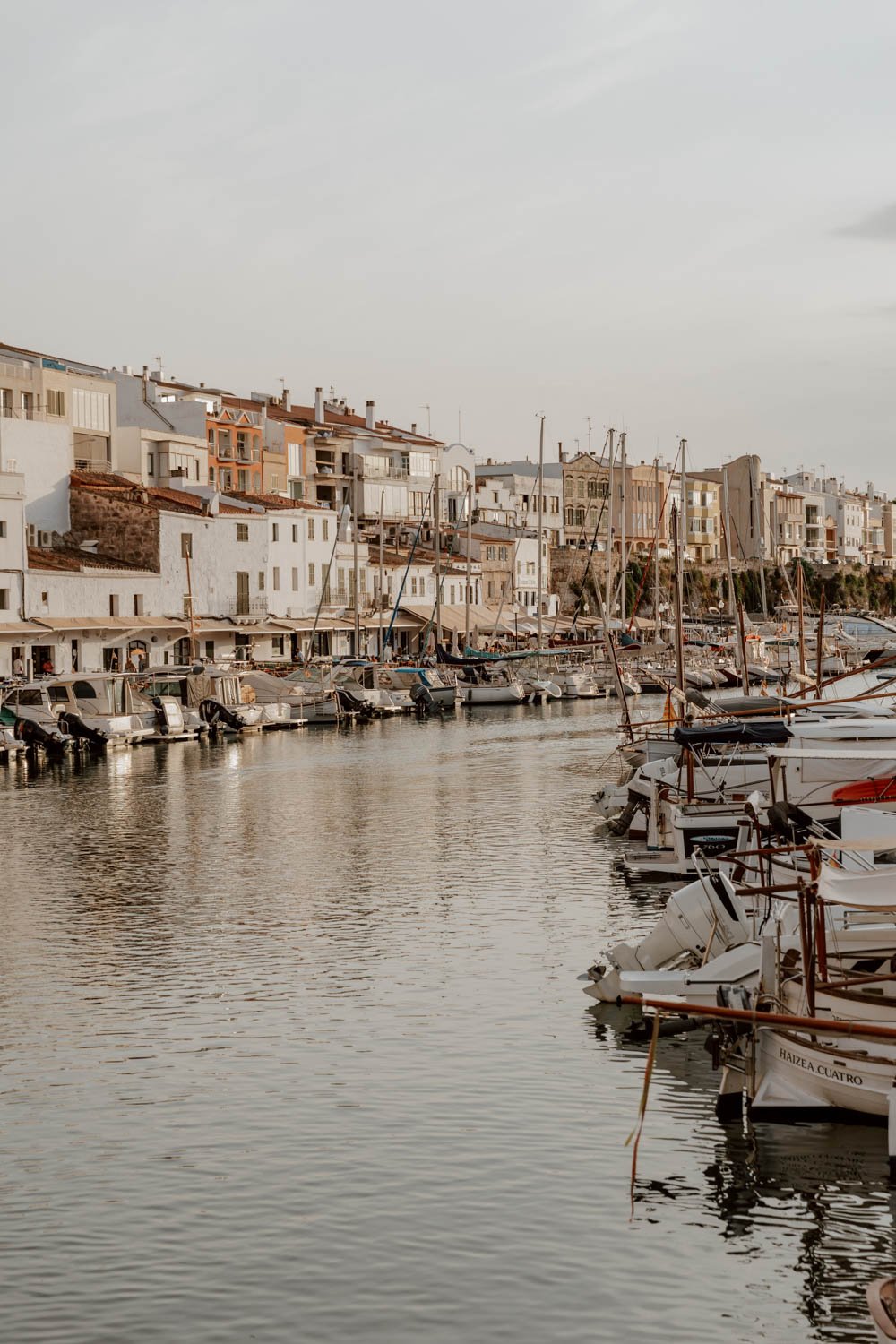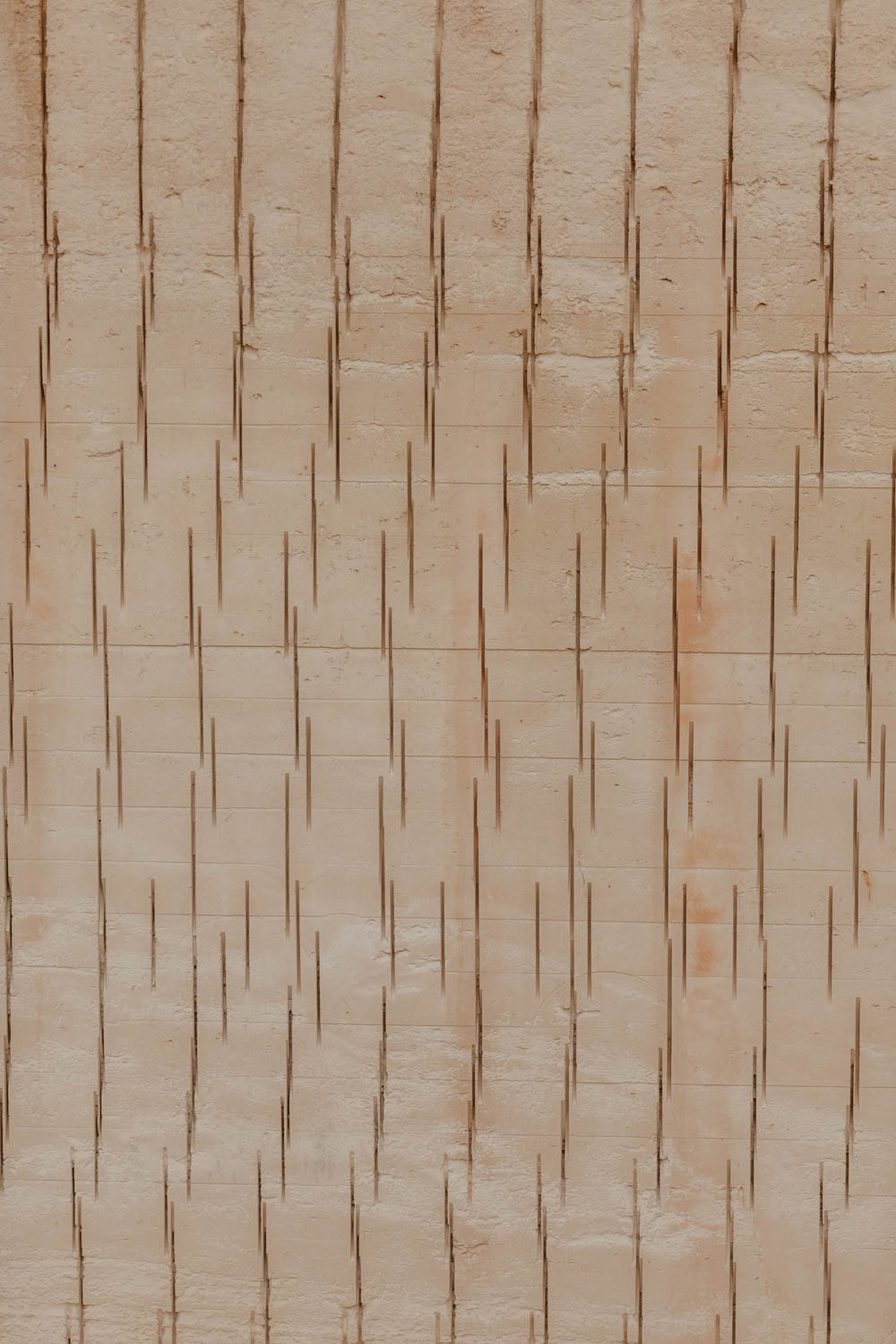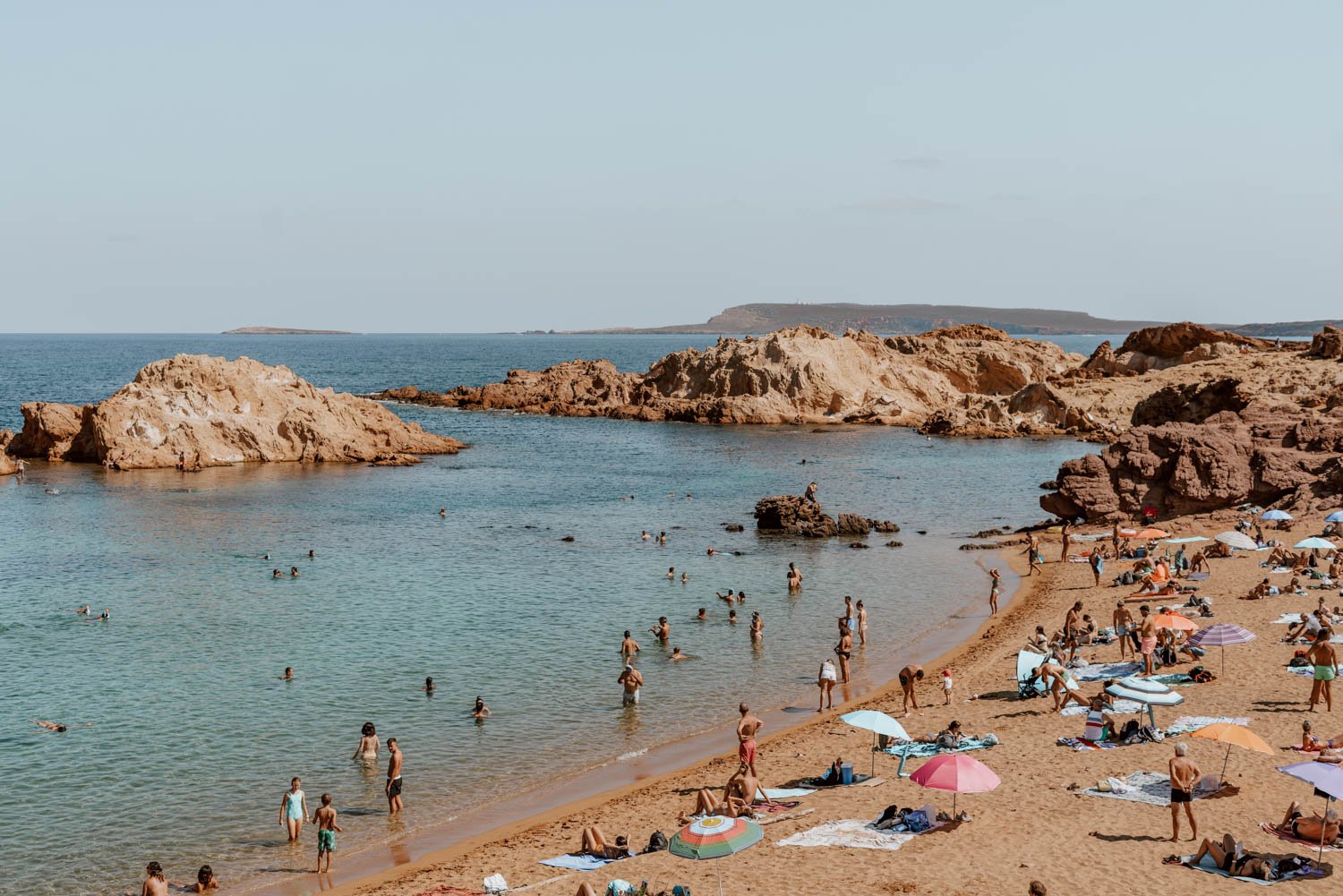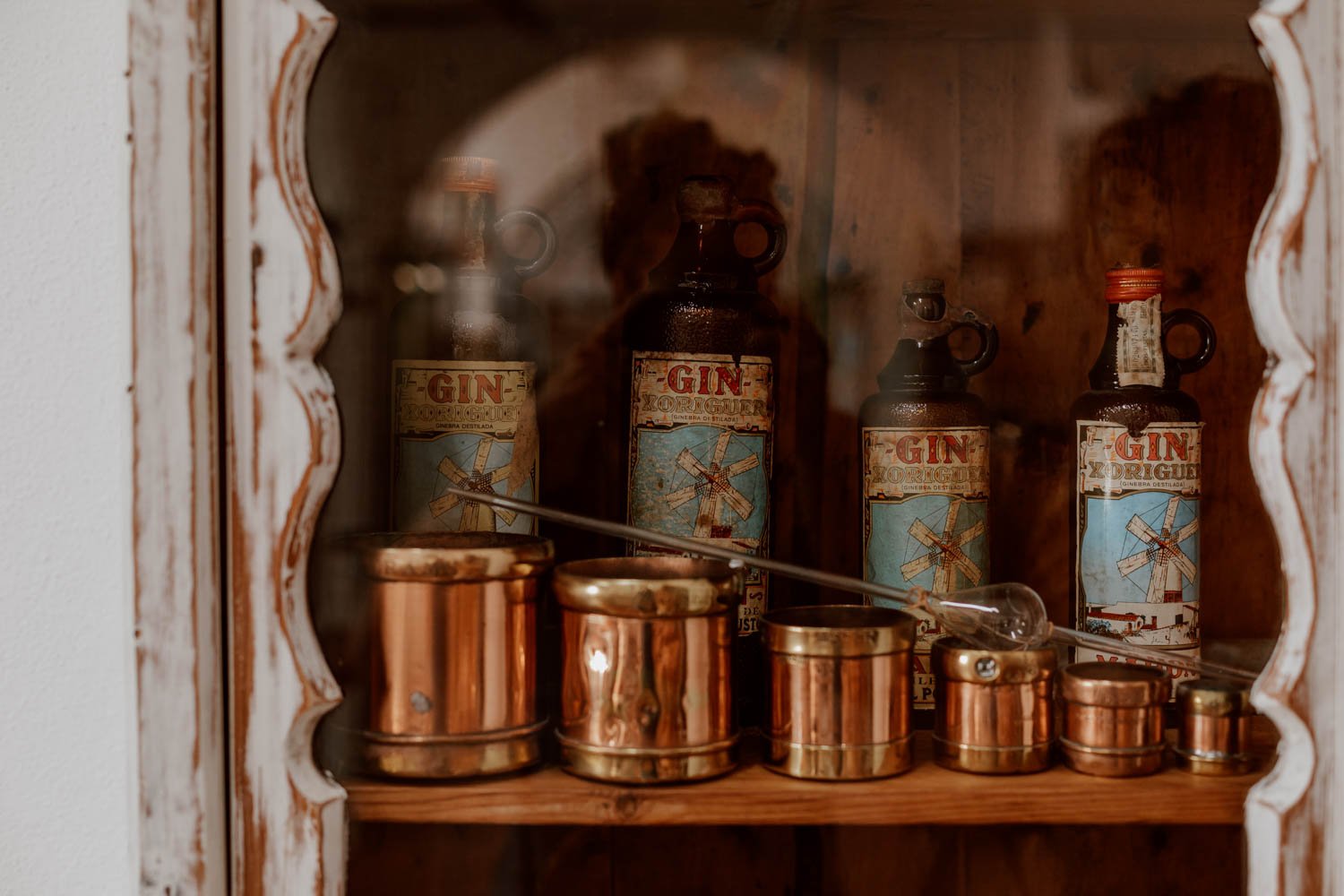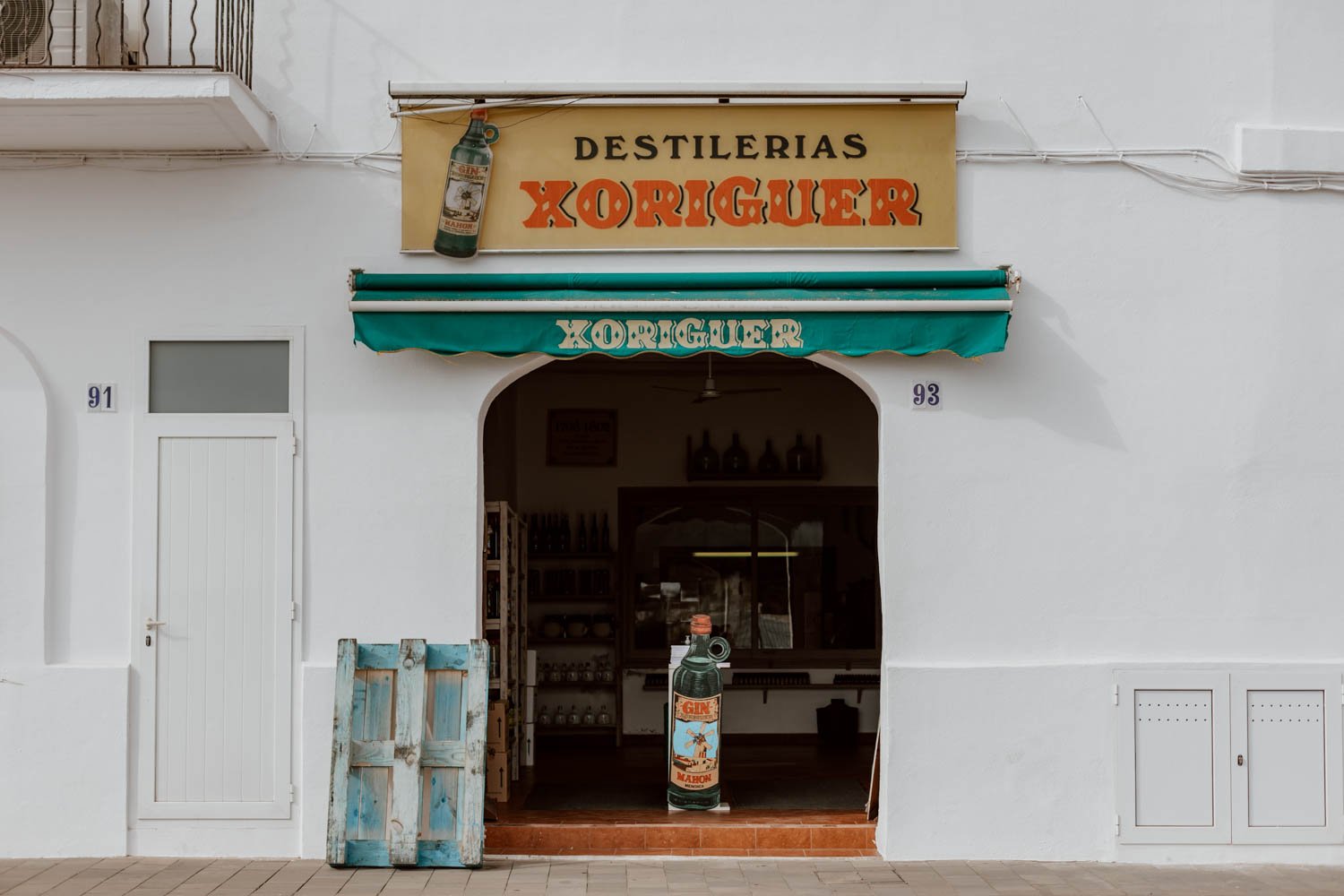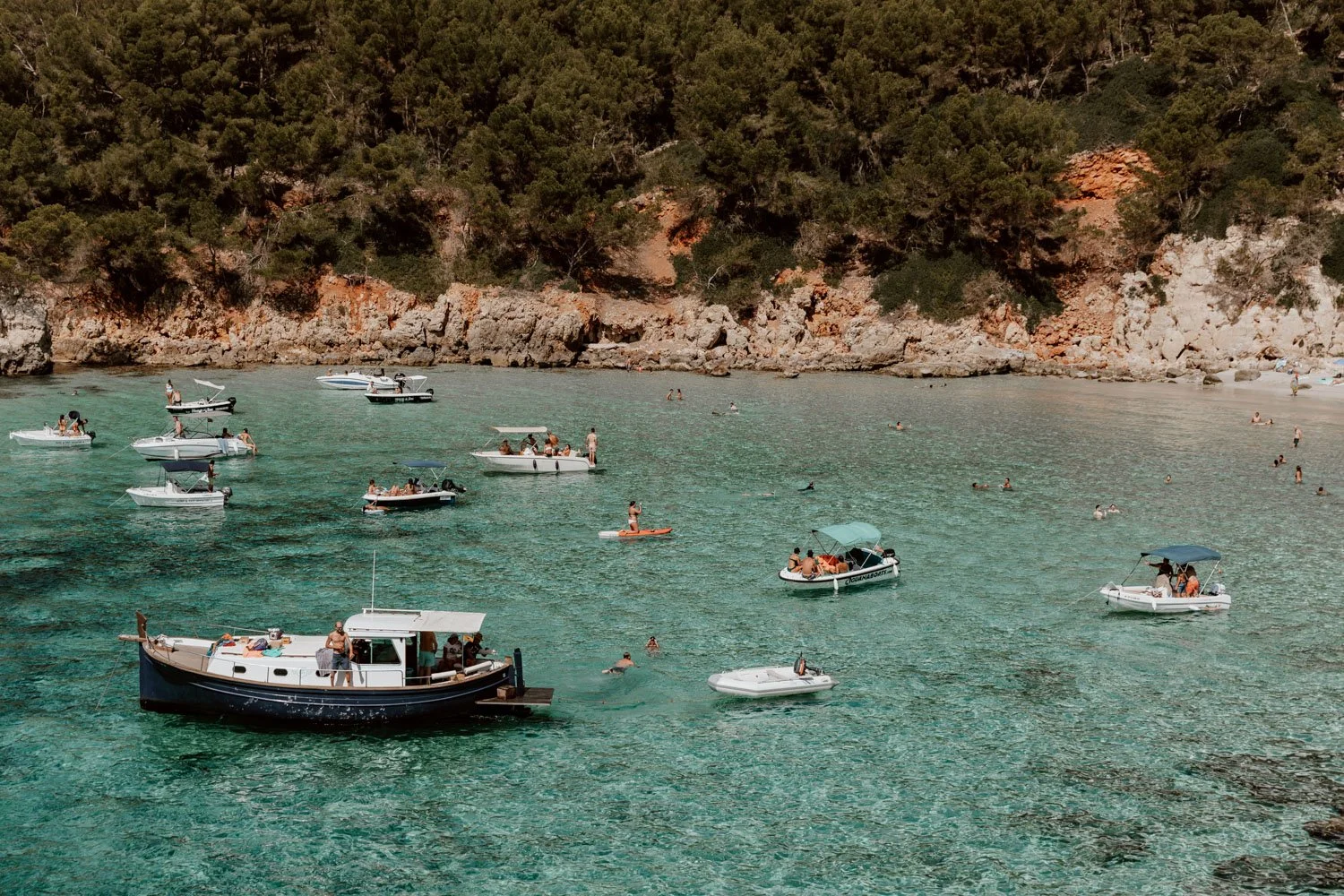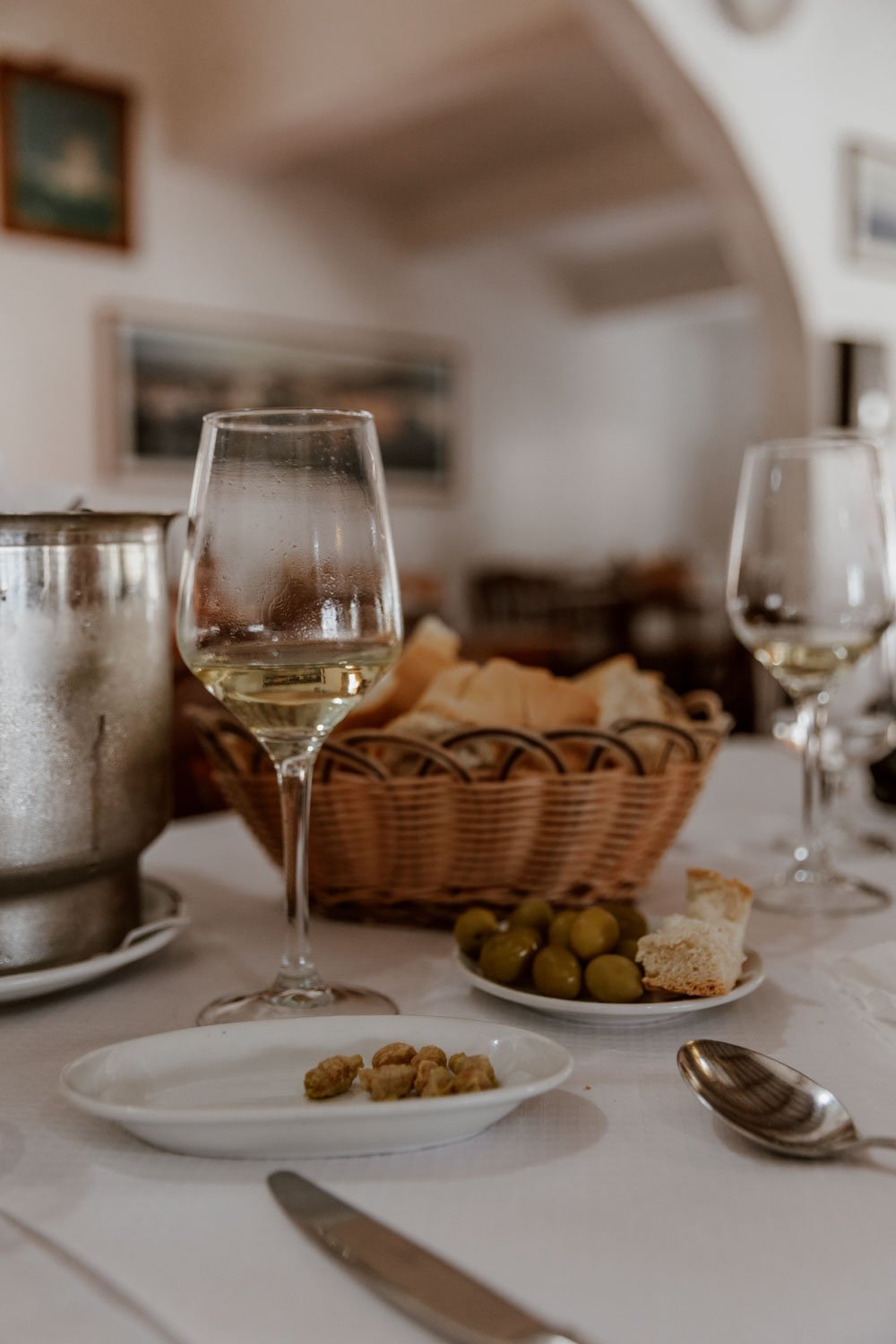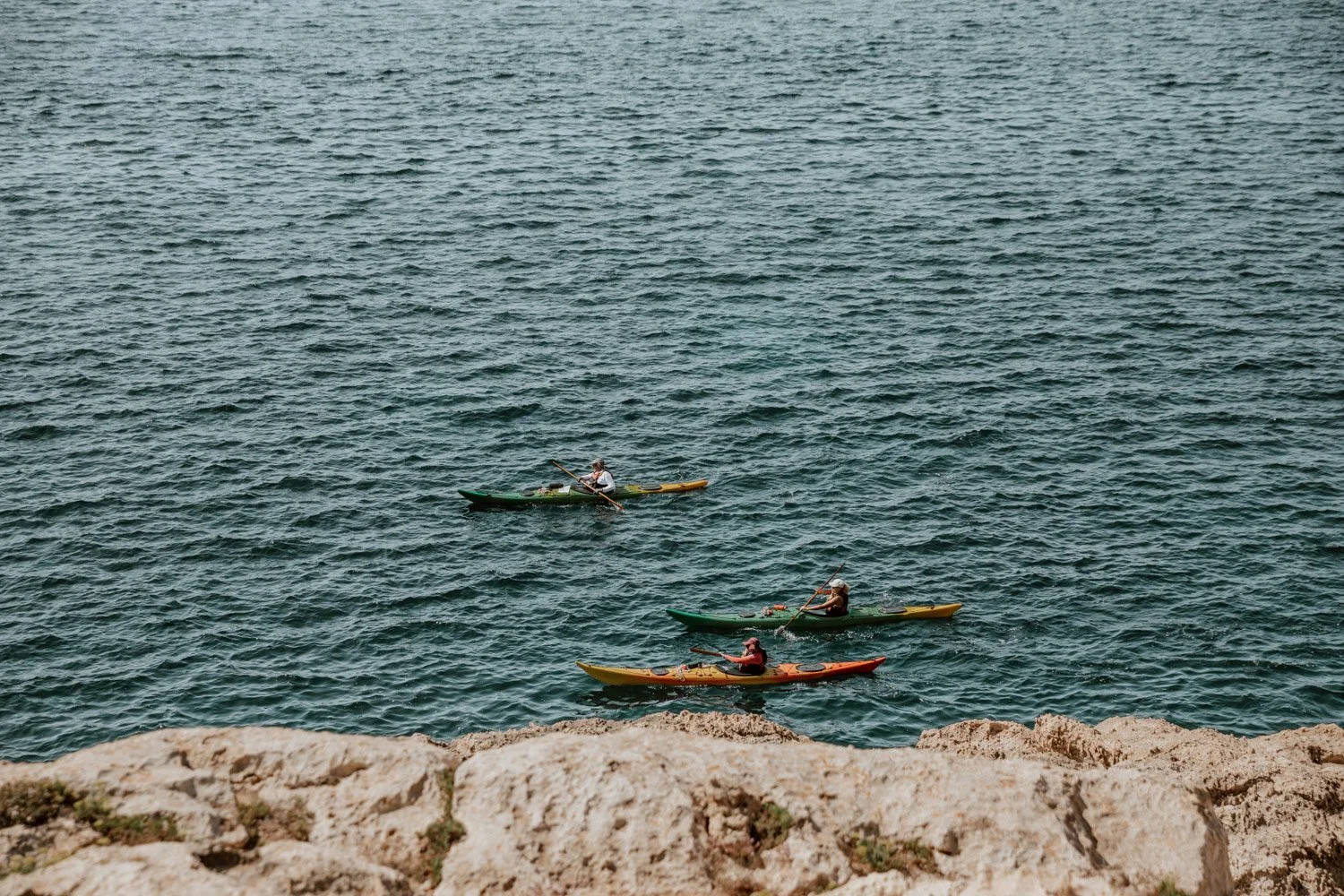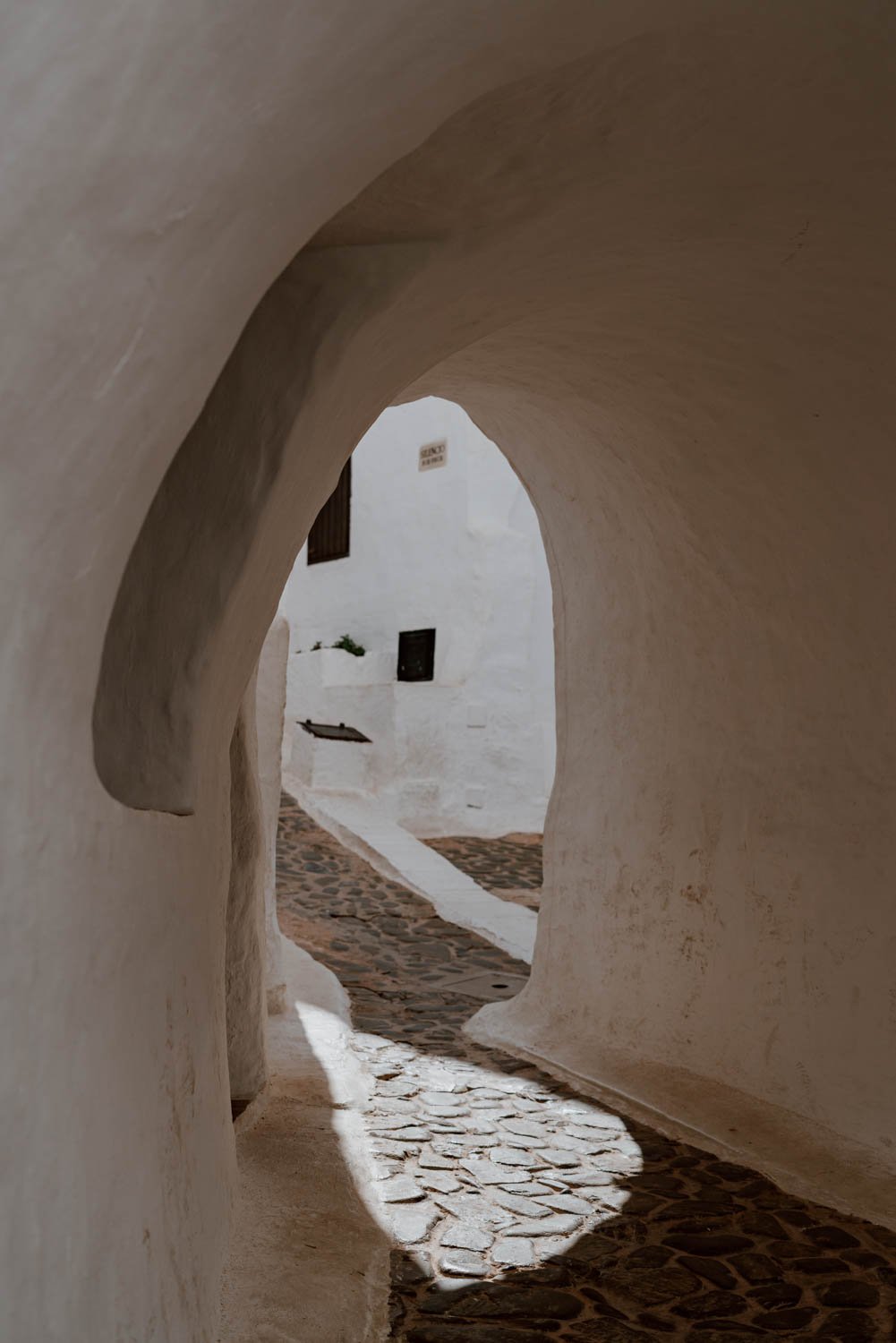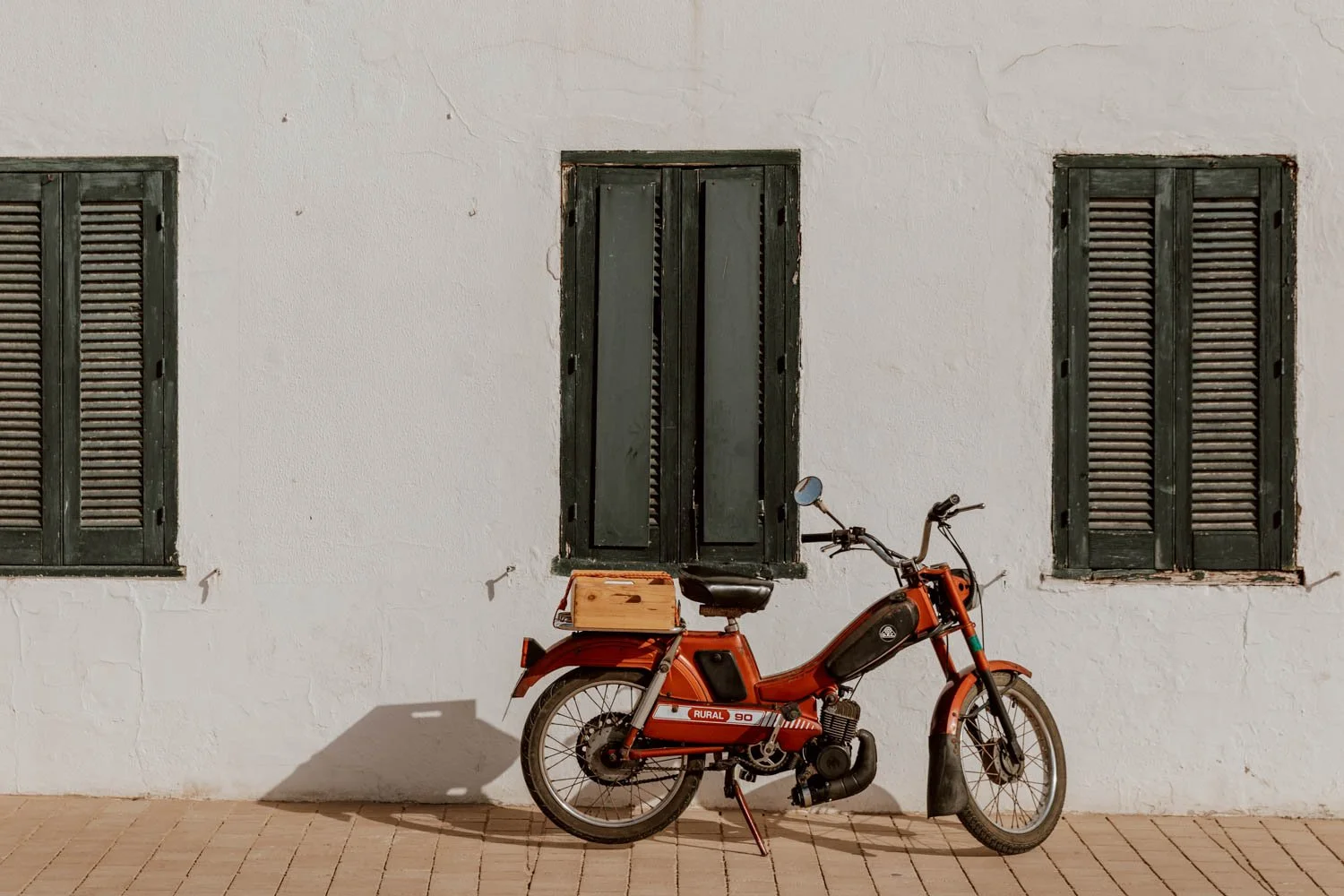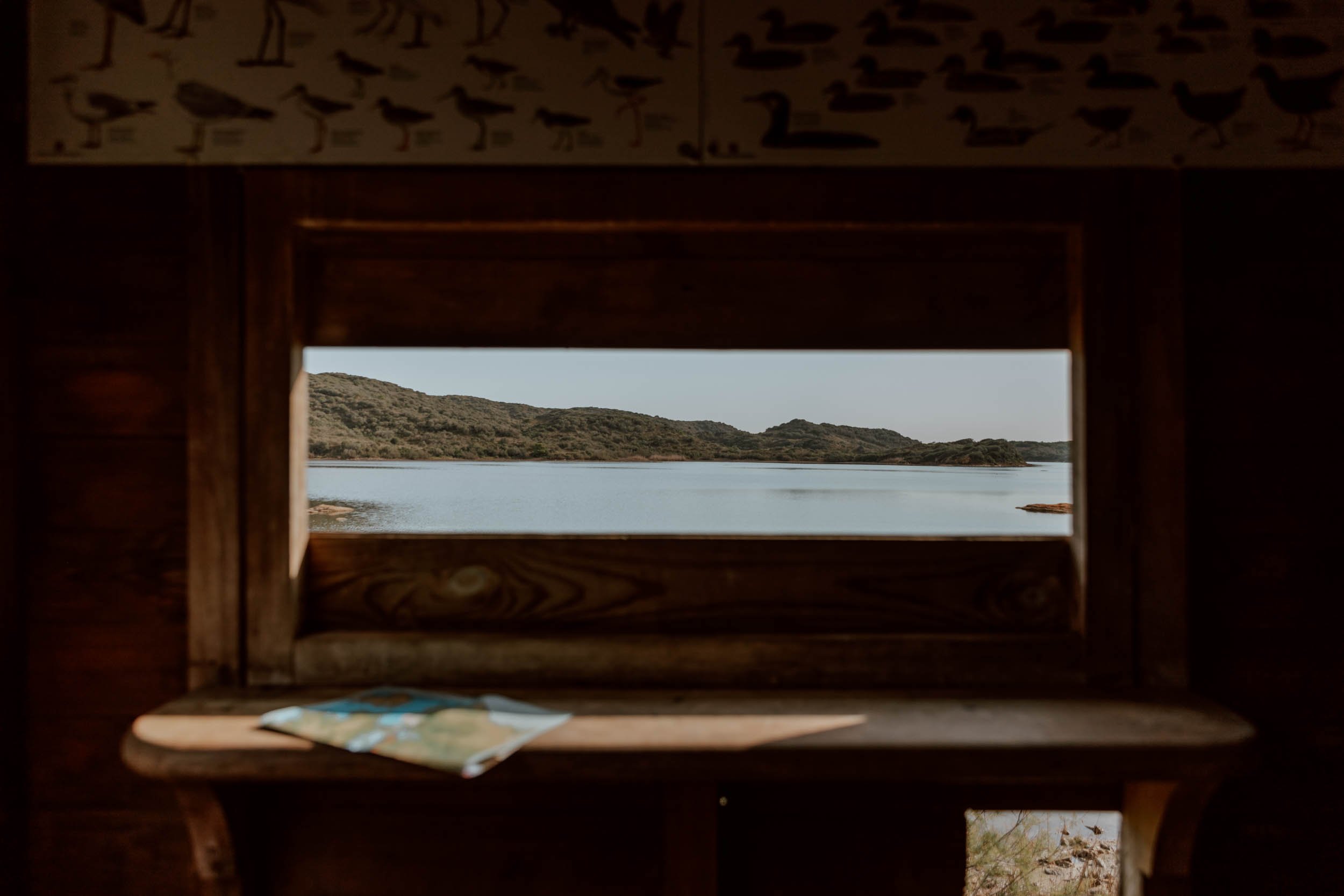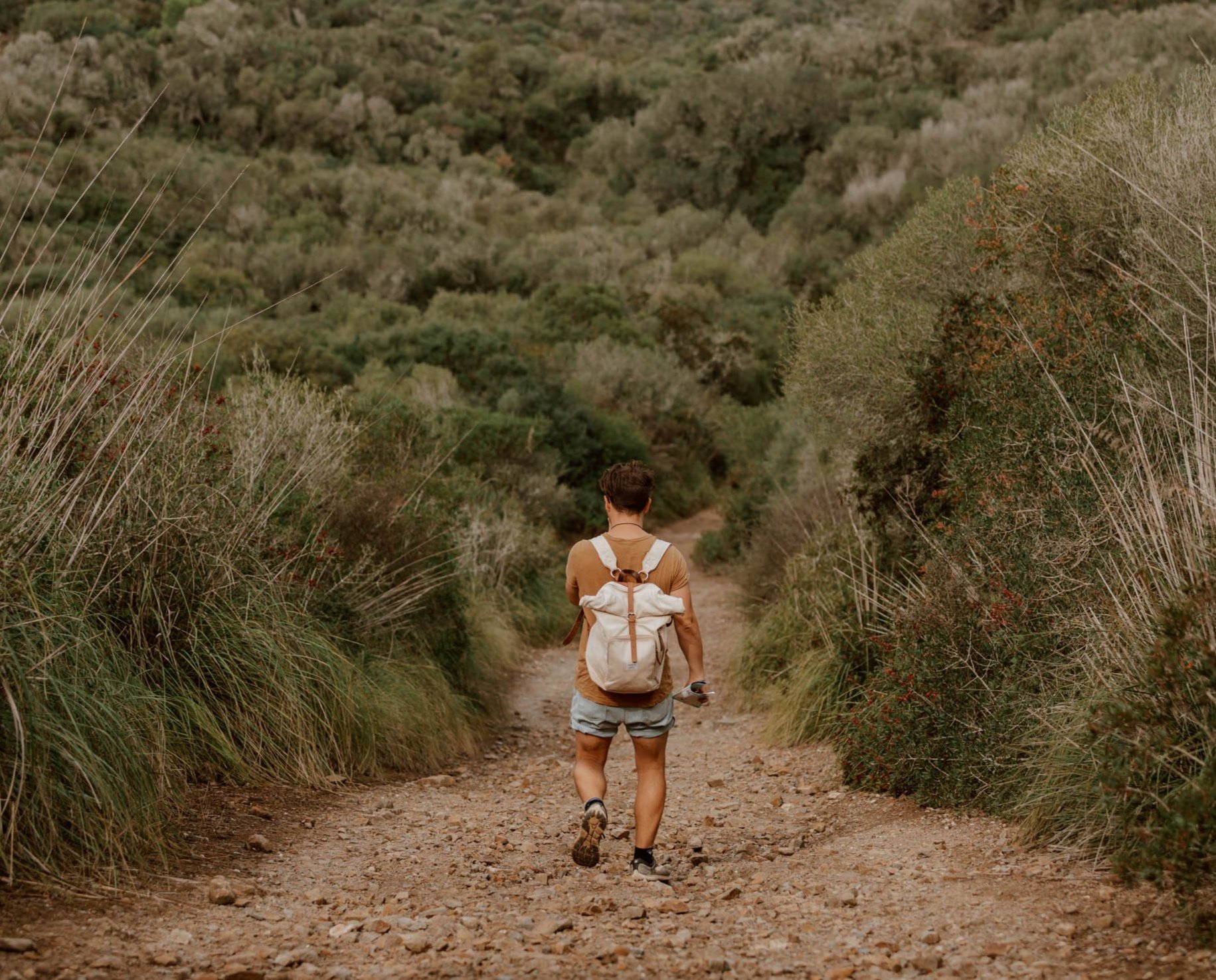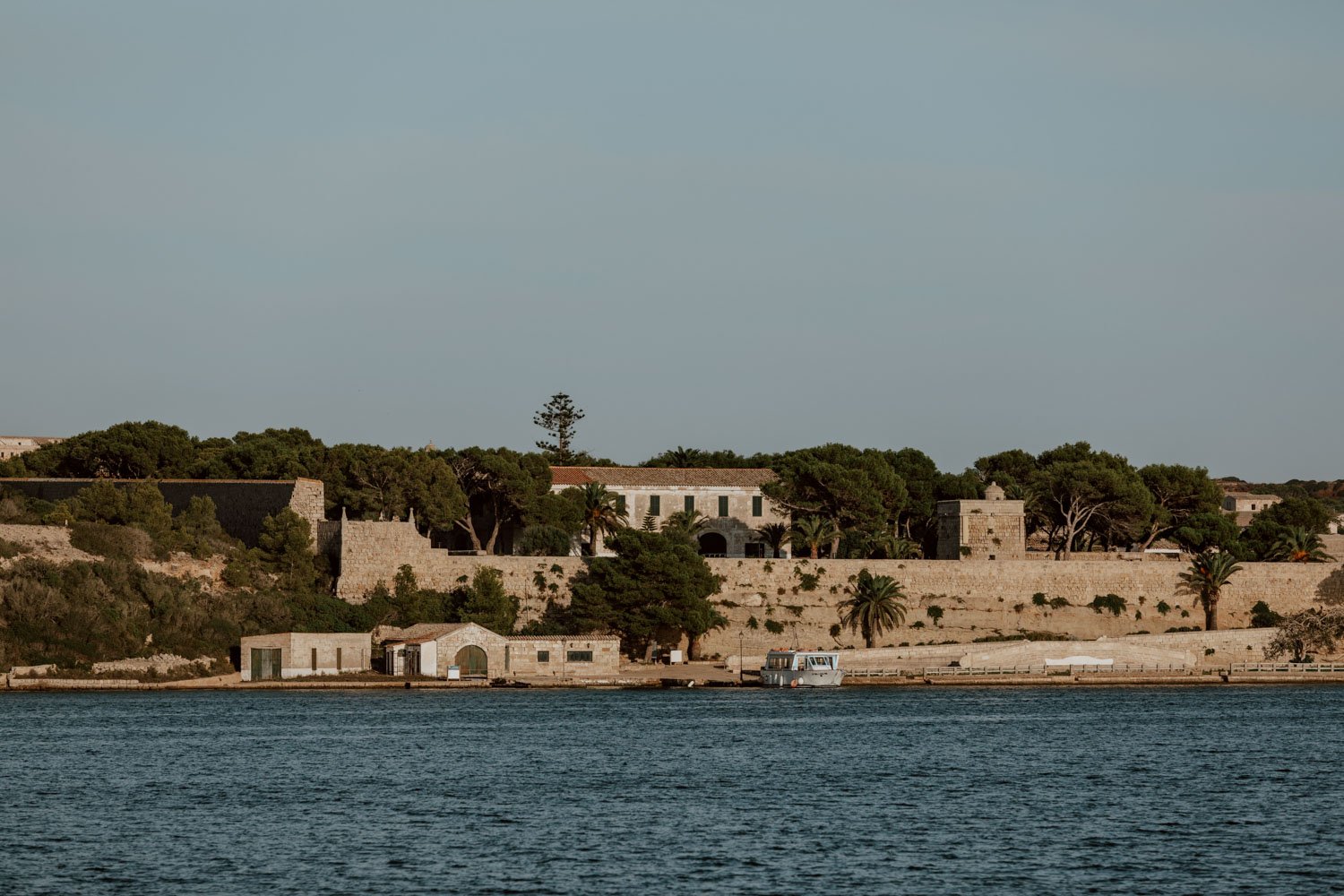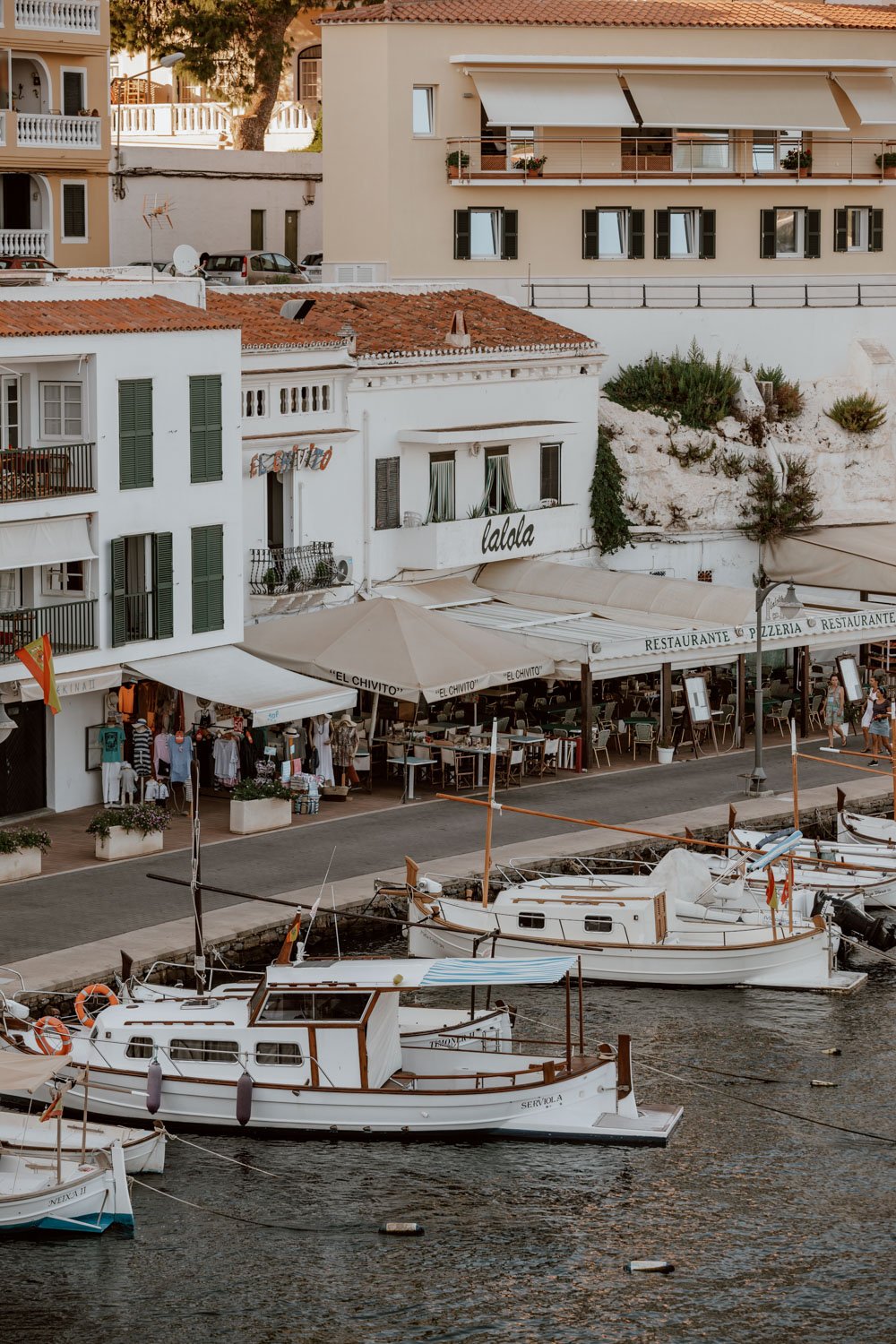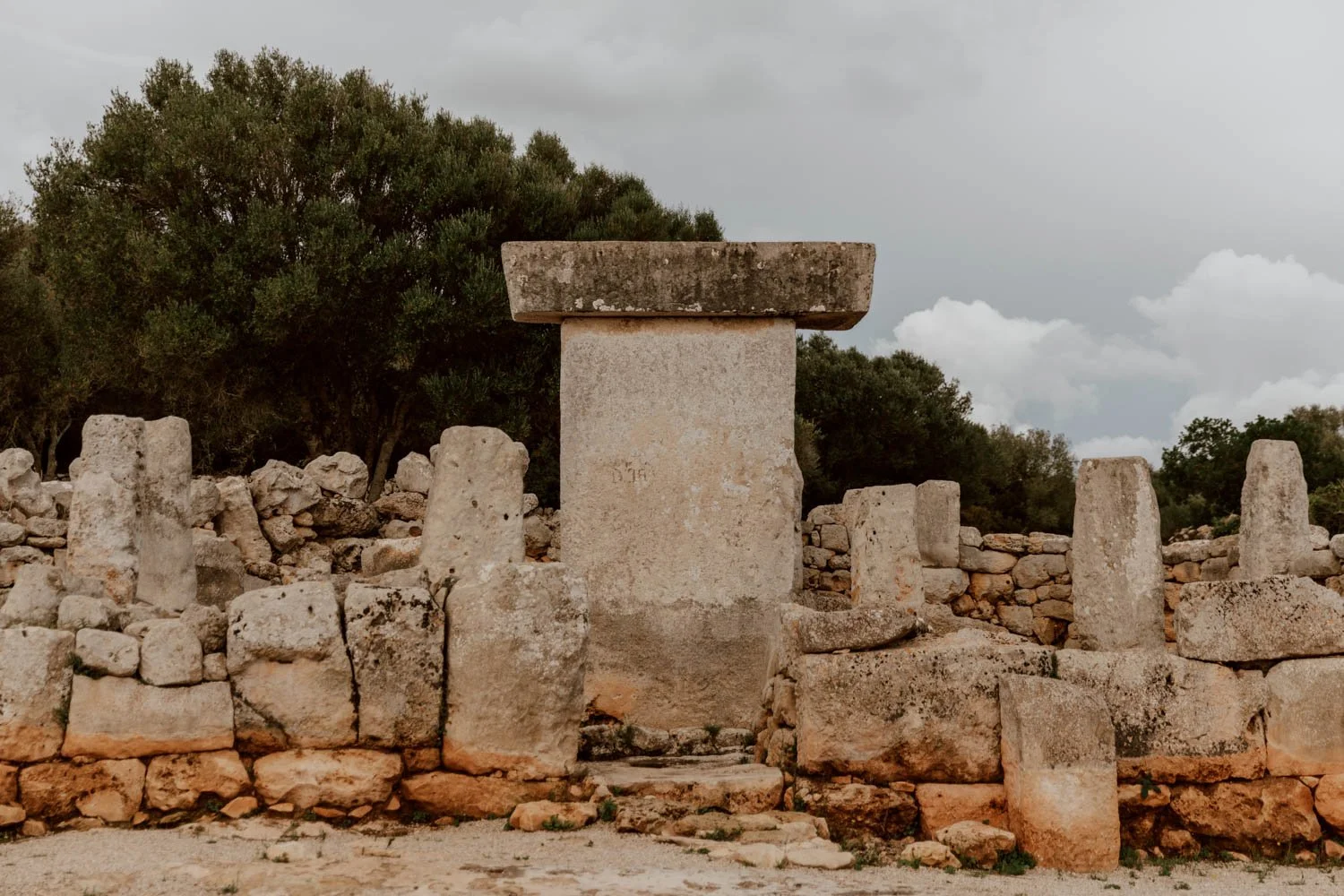Keep reading for the best things to do in Menorca!
Updated April 2024
Seduced by the paradise beaches, sunshine, and the fishbowl glasses of lemonade & gin on our first trip to Menorca way back in 2017, we promised each other that’d we return one day.
And then, after a long cold winter and and rainy spring, we decided that a summer month travelling the beautifully compact Balearic Island seemed like a very good idea indeed.
That second trip was about going a little slower along the coastline and interior to seek out both the well-known and the lesser-visited; not to try and discover a ‘different side’ of Menorca, but simply to cover all sides at our own pace and scratch a little deeper.
For, although it may principally be viewed as a summer holiday island - a place to relax, top up the tan, and eat well - the truth is that Menorca isn’t quite what you may be thinking of when ‘Spanish holiday destination’ comes to mind. Sure, there’s coastal resorts and swimming pools and luxury hotels and holiday homes and tourists and beaches - all the elements you’d expect - but this is a quieter place where a balance, delicate and fragile though it may be, is being sought.
About a fifth of the size of neighbouring Mallorca, instead of the brash concrete, noise, and hedonism you find elsewhere, the words which come to mind for us most when we think of Menorca are: undeveloped, understated, ruggedly rural and remoteness.
These are virtues, not vices; and a popular European summer holiday destination where several of most beautiful places require a bit of sweat, dust, or seawater spray to access is something to be treasured.
(but if you’re simply looking to have a week of good food, sunshine, and fun, you can absolutely have that here as well).
From the wild rust beaches and virgin white sand coves to foodie experiences in the cities and countryside, walking along dusty roads to discover secret swimming holes and prehistoric archaeology or simply sipping local gin on an art gallery island then heading out on your own boat to explore the coastline, these are our favourite personal experiences, places, and moments to be had on Menorca (north, south, east, and west!)
We think you’ll love them too during your own holiday.
On a stay of week or two, you won’t necessarily be able to do everything and anything we recommend here - but that’s not something to be concerned about. Simply pick and choose or curate your own itinerary off the back of it to suit your time and travel style and, who knows, maybe you’ll make a promise too.
These are 19 wonderful things to do in Menorca.
Explore the Island’s Beautiful Beaches
The stunning little cala of Macarelleta sums up much of what makes Menorca’s beaches so special: to get there you have to follow a 750-year-old dusty road, the water is several shades of turquoise and electric baby blue, the white sand is soft as talc, and your only company under the Mediterranean sun is browning nude and semi-nude bodies sprawled out under rainbow-coloured parasols.
It’s some kind of heaven.
Menorca is home to so many stunning secret coves, paradise-worthy stretches, off-cuts of white sand, and swimming holes where to dive in is to feel reborn, that one could while away a whole summer simply sunbathing in a new place each day. From the well-known Caribbean-esque virgin beaches and calas of the south (e.g. Macarelleta) to the dramatic, rust-red platjas of the north (e.g. Cala Pregonda), Menorca doesn't really have a bad beach,
Indeed, the diversity of remote wild coves at the end of dusty roads to accessible sandy beaches with loungers, parasols, and amenities means Menorca’s appeal as a beach holiday destination extends as much to those of whose travel style is more active and outdoorsy, as well as those who dream of a deckchair and a good book.
Does that mean you won't be able to enjoy some glorious beaches without effort? No. Should you consider at least one beach day where you have to put in a bit more effort? Abso-bloody-lutely.
There really is something for everyone - but it can be overwhelming to try and choose which to include out of the 70+ available.
Travel Tip // Visit some of the island’s most beautiful beaches (including Son Saura, Cala Turqueta, Macarella, and Macarelleta) on this super popular, and highly-rated boat tour that includes time upon the sand, swimming and a paella lunch.
Keep Reading
The 19 Best Beaches in Menorca - And Where to Find Them!
A Guide to Visiting Cala Mitjana
Take a Ciutadella City Break
When planning our month in Menorca, we earmarked Ciutadella as simply a place to go for a day trip. The rationale was that one doesn’t come to a Mediterranean island like this to spend too much time in its cities - no matter how small, historical or charming - and we were already starting out our month here with a few days over in the new capital of Mahón.
Thankfully, as with most of our best laid plans and any pre-plotted itinerary, that notion eventually went out the window. After a quiet week on the lesser visited north of the island, we were craving a bit of life and buzz, and decided that a couple of nights in Menorca’s old west side capital would probably be the best bet.
That last-minute decision was vindicated the moment we stepped out into the gorgeous streets of the historic quarter, lit up by the afternoon sun.
Best viewed as a city break destination in and of itself, or a practical base for day trips to beaches and other highlights of the island, you’ll be equally drawn in by Ciutadella’s grandeur and character, its pockets of street art and culture, the gentle buzz of its evenings streets and good restaurants, and the sprinkling of nightlife (though nothing wild) by the waterfront.
It’s also home to some of the island’s most stunning accommodation, like the truly spectacular Faustino Gran Relais.
Keep Reading
Hike The Cami de Cavalls
If you only like to lie on beautiful beaches, Menorca is perfect.
If you're a hiker, Menorca is perfect.
If you're like us and like to do BOTH, then Menorca is absolutely bloody perfect.
A key reason for this broad appeal is the Camí de Cavalls, the dusty 185 km / 115 mile trail which circumnavigates the whole of the island. A haven for walkers, it also threads together the coastline for those who wish to access or link the remote and rustic beaches and calas for which the island is famous.
Directly translated as 'Horse Path' or, more poetically, 'The Way of the Horses', unlike several more famous long-distance walking paths in Europe, the Camí did not begin as a religious pilgrimage route toward a revered monument or place. Instead its roots were practical and defensive, and based upon a command in the 13th century by King Jaime II, that each of his knights were to have a horse ready to defend the island’s perimeter.
In more recent times, parts of the path were falling into disrepair or being siphoned off by private landowners, threatening its integrity and accessibility. Viewing the Camí de Cavalls as as unique piece of Menorcan cultural heritage to be kept whole and protected, local groups campaigned for the passing of the Llei del Camí de Cavalls (Law of the Camí de Cavalls) by the Balearic Islands Government in 2000, a law to ensure and enshrine the path’s protection and public access, and kickstart much of the work done to make the route tourist-friendly.
Some people come to Menorca to walk the whole 20 sections in one go, but we’re not expecting you to necessarily to do that (especially not in the August heat!). However, walking one or two coastal sections of the Camí during your stay is one of the best things to do in Menorca, as well as essential for reaching several of the best beaches on the island.
Keep Reading
Get Lost in Lithica
A few hours at a quarry isn't the typical sort of thing you might think of when designing your route on this island - but there aren't many quarries like Líthica, Pedreres de s'Hostal.
Situated just a few kilometres outside of Ciutadella, its marés stone provided the raw building blocks for much of western Menorca - churches, fortresses, palaces, towns - but the site itself could easily be dismissed as a deep wound on the landscape.
Something be filled up and forgotten once exhausted, picked dry of its stone fruit. A sealed-off testament to the toxic interplay of man and nature; we take, we consume, we cover our tracks, we forget that we took from beneath to build above.
When production ceased in 1994, that's what was mooted.
Instead, Laetitia Sauleau Lara and a non-profit private foundation stepped in and campaigned to avoid the easy route. In the hollowed out depths created by the ever-deeper carving, cutting, cubing of man then machine, they saw potential as well as an important part of the island’s heritage; a unique cultural and artistic space for future generations of Menorcans and tourists alike.
Come summertime, there are balmy late-night concerts and art installations. Theatres, orchestras, and an occasional film festival. A botanical garden sees more trees planted and nature interweave itself with the surrounds. Each year, more tourists arrive than the last.
Built as something for people to enjoy and interact with, it was also the representation of the artistic concept of returning stones to the quarry; reversing the stonecutter's work and process of man only taking things from nature, never giving back.
This is a really unique place to visit, and unmissable if you’re on the western side of Menorca.
Keep Reading
How To Visit The Stunning Lithica Quarry
Go North
The south coast of Menorca takes most of the plaudits, and for good reason (you’ll find out why later in this post). However, we want to first take the opportunity to give the understudy a moment in the spotlight.
More rugged and impenetrable, with far fewer communities or resorts along its rocky rust-red shores, northern Menorca sees far fewer tourists based there; lack of public transport connections also mean it’s a less popular option for day trips and much of the sea is a protected reserve.
However, if you hire a car in Menorca, or are looking for an alternative, slightly more exclusive base for your trip, then you should absolutely go north.
The geology and topography is starkly different to the limestone south, but it isn’t a controversial opinion to say that it is more captivating in some ways. Certainly, its two sweeping bays which rank amongst our best beaches in Menorca are absolutely on a par with the more famous white sand ones of the south (and one half of ADR prefers them), and the fact that a bus doesn’t go up there keeps them a little further away from the crowds.
Fornells and Cala Morell are also found in the north of Menorca; the former a pretty white-washed town famous for its lobster, windsurfing, watersports experiences, and chilled boat tours, the latter a cool spot with man-made platforms to stretch out upon and one of the island’s most famous restaurants. We really liked both, and being based up in Fornells for a few days was a decision we’re happy to have made.
So, when thinking of things to do in Menorca, don’t just stick to the south coast.
Keep Reading
7 Things To Know Before You Hire A Car in Menorca
Get Acquainted With Menorcan Gin
Considering that without gin, Along Dusty Roads may never have existed (not sure what we mean, click here), it was only fitting that one of our very first orders of business in Mahón was a trip to Gin Xoriguer, the local gin distillery.
A hangover from the century of British rule in Menorca, Xoriguer was created by a local family by the name of Pons nearly 100 years ago to appease the taste of sailors unable to find gin in the local taverns. Which, given that juniper berries are unable to grow in the Balearics, was quite a shrewd move!
Still very much family-owned, Xoriguer has, over the years, become a highly-respected cult gin internationally, best known for its distinctive Mediterranean flavour, iconic bottle and windmill logo. You'll see it on every bar menu on the island, and imbibing gin daily is therefore a must-do when in Menorca.
A proper G&T in on the island involves a lot of ice and a big fishbowl glass, but the preferred cocktail of many is a ‘Pomada’: a refreshing, zingy drink of gin, lemonade, lots of ice, and lemon!
Gin lovers may keen to visit Xoriguer’s little distillery and shop in the centre of Mahón where you view elements of the manufacturing process through several large windows (you can only go inside the production section with a guided tour), and, if you’re not sure which particular type of gin you fancy, most of their products are available to try for free in a self-guided tasting - which is a reason we'd recommend saving your visit for after lunch if you can!
It’s free to visit and reservations are not required.
Travel Tip // Alternatively, if you’d like to join a more formal tasting at Xoriguer, alongside some local meats and treats, plus have a guided tour of the distillery to learn more about the gin making process, consider booking a spot one this well-priced guided tour and tasting (it’s got excellent reviews).
Keep Reading
Drive Your Own Boat
On any Mediterranean Island, heading out for a day on the water is always a good idea.
In Menorca however, you can do it a little differently.
Whilst there are lots of popular day trip boat excursions for sightseeing, swimming and snorkelling (like this one), the most memorable way to explore the southern or western coastline is to rent your own boat for the day.
Now, we know what you may be thinking: surely that’s only possible if you’ve got experience or loads of money?
Well, the most popular type of boat rental in Menorca doesn't require the former, with the majority of companies offering boat rental with no licence required and no previous experience necessary. The reason this is possible is due to the compact size and limited power of the boats and the level of skill required to drive them i.e. not very much at all! You really can just turn up on the day of your booking and head out after a short briefing.
On the money point though, renting for a half or full-day isn’t cheap but is also not as expensive as you may assume (starting at €160), especially if you’re a group of 4+ people.
The southern resort town of Cala Galdana and Ciutadella are the best places to rent and set sail from - but it’s really important you act responsibly, pack the right kit, and follow the rules of the boat companies.
If you’d prefer someone else to be in charge of navigation so you can just focus on swimming and soaking in the coast, then check out these highly-rated boat trip tours departing from various parts of the island.
Keep Reading
Head Up Monte Toro
This little Balearic island is tremendously flat, so talking about its highest point in too glowing a way is a bit like giving a prize for the most honest politician.
Nevertheless, walking or driving up to the top of Monte Toro on clear day is a must-do, and provides visitors with access to the most incredible panoramic vista over the island.
From its open-air balcony, the countryside and the coastline unfold beneath and into the Balearic Sea, with the colours changing from a spring green to the dry browns and golds after long, hot summer; it is the best view of Menorca.
As with many centuries old sights, quite how it got its name (Mountain of the Bull) is however, a point of contention - the most widely accepted story beginning with a group of13th century months who set off up the hill to seek the source of a curious light.
After becoming lost on an increasingly treacherous path, they were confronted by an angry bull; defending themselves in the only way the knew, with the only thing they had - their crosses - the bull, cowered by the sight, turned and cleared the path for them. He then led the monks to a cave at the top of the hill where, inside, they saw an image of the Virgin Mary.
A chapel was built upon the site, the mountain named after the bull, and the vision gave Menorca its patron saint of 'Nuestra Señora del Toro'.
You can pair Monte Toro with a visit to Es Mercadal, or simply stop by on your way north, south, east, or west. We would however recommend visiting during early morning or late afternoon/evening - the view seems to come alive under a low, golden sun.
Keep Reading
Eat & Art in Mahón
The capital of the island, just 5 kms from the island’s only airport, you’re likely to pass through Mahón (Maó in Catalan) on your way to or from somewhere else.
But, is it worth sticking around or visiting? For us, it’s an emphatic yes.
Whilst the coastline, being poolside at your hotel or villa, and hiking in rustic nature is all fabulous, the spice of life is found in variety; a day or longer in Mahón is an absolute must.
Beyond its pretty pastel colour palette and streets, the small city of 25,000 is the cultural centre of Menorca: Hauser&Wirth’s brand new art gallery is a boat ride away on Isla del Rey whilst there’s Can Oliver the Museum of Menorca for curated insights into the history and traditions of the island.
With excellent boutique hotels, markets and artisans, a harbour and several plazas abuzz with evening drinkers, plus the iconic fish market for foodies to indulge, you may actually want to reconsider whether just a day is actually enough.
If you do stay for a few nights, then you absolutely have to get a pair of your own custom-made avarcas too…
Travel Tip // One of the most popular things to do in Mahon, is take a short boat ride around the harbour; it provides a wonderful viewpoint back onto the city. You can buy your tickets in advance here.
Keep Reading
Sample Local Foods
Drive around the island for 15 minutes in any direction, and you’ll see a sign pointing you toward a small-scale farmer selling their cheese directly. Walk in to Mahón’s fish market or glance a menu in Fornells, and your jaw will drop at the variety and quantity of fresh locally caught seafood. Stand outside any little bakery and you’re guaranteed to see a local emerge with a large box tied with ribbon, housing the sweet stuffed pastry which Menorcans feast upon daily.
As is always the case with a Mediterranean island, the food and the food culture surrounding it is a massive part of the appeal; and one of the best things to do in Menorca is to avail yourself of the opportunity to support and savour it instead of opting for more generic, global menus.
Feast on tapas or pintxos of anchovies or a hearty serving of bacalao con tomate, munch on the island’s famous full-flavoured smoked cheeses (especially those produced and sold directly), knock back gin and pass it off as a cultural endeavour, join a Mediterranean cooking class, devour pan con tomate at every opportunity, and pair your morning coffee with a chunk of ensaïmada (the official best in the world are found in Es Mercadal).
If you find yourself with a little time whilst driving from destination, to destination and are so inclined, just follow one of the little signs towards a rural cheese farmer or olive oil grove. Reservations are not necessary, and most are open throughout the morning (siesta is still sacrosanct though).
Wherever you see KM0 on a menu or food product by the way, that means it’s 100% locally sourced and made. Oh, and one final thing. There’s a legend kicking around that mayonnaise was invented on the island (mahon-naisse…get it?).
Keep Reading
23 Things To Know Before You Visit Menorca
Go Sea Kayaking
A slower way to explore the coastline, with the opportunity to cliff jump, paddle through sea caves, and stop for secluded swims, is to rent a kayak.
We did this back in 2017 and, although Andrew lost his - expensive, new - sunglasses in the deep (no, Emily still hasn’t forgiven him for this!), it was a fantastic day out; just make sure you slap on plenty suncream and wear a hat.
Cala Galdana, Fornells, and Es Grau are the best places to set our from, with sea kayaking companies located in each. Both offer the change to head out on organised tours (like this one in Fornells, and this one in Binibeca), with a guide to show you secret spots and hidden caves, or alternatively you can hire a kay for an hour to a day and head out and explore Menorca’s beautiful coastline at your own speed.
Sailing and windsurfing are also possible, with Fornells the hub for these watersports.
Keep Reading
Whitewash in Binibeca Vell
Wander the narrow streets and white-washed arches of Binibeca Vell and you could be forgiven for thinking that this village has existed upon the island for many, many years.
The truth however is a tad more contrived.
Built in the 1970s by the Spanish architect, Antonio Sintes, this collection of 165 uniquely beautiful properties (often said to look more Greek than Menorcan) was the result of a shared dream to create an idyllic space to attract bohemians and inspire artists; a stunning labyrinthine fisherman’s village of sloping alleyways, chalk-white walls and wooden balconies.
Its depiction upon canvas in many of Francesc Poch Romeu’s works (a Barcelona native, and one of Menorca’s most famous artists) suggests that this is a dream that came to fruition.
For the tourist, visiting Binibeca Vell as a day trip and getting lost (or posing) in the whitewash labyrinthine streets remains one of the most popular things to do in Menorca, however after having spent an entire week in this charming white-washed villa a hop, skip, and a jump from it, we are keen to tell you that this charming village also makes a fantastic base from which to explore the south of the island.
Keep Reading
Rent A Scooter
We rented a car in Menorca for three weeks as it was the most practical and convenient option for us to cover the whole coastline.
However, the most memorable, fun travel days we had on the road were very much on two wheels (check out the reel over on our Instagram @alongdustyroads), and that’s what we’d recommend if you’re here for a shorter amount of time or just want to have a bit of an adventure beyond your hotel/apartment one day.
Scooter rental is widespread across the island, and you can easily rent for a single or multi-day period. Although the public transport network is pretty excellent, especially in summer, it will restrict you to one or two destinations in day, rather than being able to zip along and explore much more independently.
Additionally, if travelling in the high season, when car parks tend to fill up by late morning, having a scooter means you can almost always find a small space to park in irrespective of the time of day you arrive - ideal for those last minute beach trips.
If two wheels doesn’t appeal, then it’s also very common to hire a car in Menorca for a few days or your whole stay. It’s essential for certain bases and travel styles, and really does open up the whole of the island during your stay.
We recommend looking + booking via Rentalcars.com to get an idea of prices, deals, and availability for your own travel dates and budget.
Note that you should always check your travel insurance coverage or requirements before renting and riding a scooter and, if covered, make sure you’re a responsible and respectful driver.
Keep Reading
A Walk in S'Albufera des Grau
Central to Menorca’s designation as a Biosphere Reserve by UNESCO in 1993, S’Albufera des Grau nature park has one of the most diverse ecosystems of all the Mediterranean islands.
Situated in the northeastern part of the island, it covers more than 5,000 hectares of of wetlands, expansive sections of coastline, an islet and a number of traditional farms; a series of environmentally diverse landscapes which play home to hundreds of species of plants, birds, animals and marine life.
Although it may not be everyone’s cup of tea in contrast to another day by the pool, the protected park offers a lesser-visited alternative to tourist towns and beaches, and an opportunity for short walks, bird watching and sampling slow village life in the charming little Es Grau.
Keep Reading
A Guide to Visiting S’Albufera des Grau Nature Park
A Short Guide to Es Grau | A Charming Seaside Village in Menorca
Enjoy the Wine and Food at Binifadet
The story of Binifadet can be traced back to a single vine planted in 1979, by a chap called Carlos Anglés.
Nurtured and grown to provide wine for his family and friends, its existence inspired a lifelong project, and by 2001 had led to the purchase of the land that now bears the fruit for Binifadet.
Since opening to the public in 2004, Binifadet has grown to become the largest winery in Menorca, and a visit here is an essential experience for any and all visitors who enjoy sampling fine wines and beautiful ambience.
Visitors are able to explore the vineyards at their own pace or alternatively book a one-hour guided tour which includes a tasting of three of the winery’s best wines (if you’re lucky, you’ll also get a small plate of local cheese to try too!)
Alternatively, you can make a reservation to eat in the wonderful on-site restaurant. We were fortunate enough to eat here on our first visit to Menorca, and highly recommend it. The garden setting is glorious, and the food excellent.
Highly-regarded restaurants with an intense focus on locally-sourced ingredients are opening up all the time on the island, like Es Tase de na Silvia in Ciutadella, but other longstanding iconic places of note to eat & drink in Menorca include:
Cova d'en Xoroi | Fantastic cave bar in Cala en Porter for a stellar sunset and live music. Put your glad rags on though and book a few days ahead, especially in high season.
Bambu | Another one to dress up for, this restaurant and bar by the waters of Binibeca is a sunset and evening hotspot.
Es Molí d’es Racó | A super popular lunch restaurant in an old windmill, but the food isn’t quite as memorable as the atmosphere - it’s located in Es Mercadal.
Ivette | A stylish outdoors restaurant popular in Cala Morell.
Fornells | If looking for a good long lunch in the sun, this is the place to go. Hundreds come each day for its very expensive lobster caldera (we don’t eat lobster for ethical reasons) at the dozen or so restaurants specialising in this, but the pretty town is also home to several other excellent innovative restaurants.
It’s recommended to reserve in advance for all of the above.
Lighthouses & Sunsets
There are seven lighthouses in Menorca, but we don’t think you need to visit them all.
The striped Faváritx and Artrutx, Cavalleria, and Punta Natí are those which should feature most prominently on your itinerary, with our favourites being Faváritx and Cavalleria. The latter is a fantastic and photogenic sunset spot, whilst the former is found at the end of a walk along a dusty road, which also brings you to a couple of remote beaches.
Sunsets in Menorca are also quite spectacular, and something to make time for each day (preferably with a gin in front of you and a loved one beside you). A wonderful, albeit well-known and crowded spot, is at Pont d'en Gil outside of Ciutadella. Alternatively, plonk yourself down anywhere on the western or south coast, and you’ll get something gorgeous.
Keep Reading
13 Wonderful Things To Do in Ciutadella
Alaior, The Donkeys, and A Pig
As with the north, the interior of Menorca also goes slightly under the radar of most visitors.
Although Es Mercadal is absolutely worth a morning or afternoon (especially for its ensaímadas), it was the town Alaior which had the most lasting impact for us, and was one of our favourite places to wander around on the island.
A local’s town rather than a tourist attraction, it gave us moments of insight into daily life and splashes of culture. It’s also developing into a bit of a secondary cultural hub to Mahón, with its LÔAC contemporary art gallery, Pinzellades d'Art and a growing number of cultural events and workshops. Therefore, if the coast and the cities aren’t scratching your itch - or you’d like to see a different side to the island - this is the place to head toward for the day (or even base yourself in).
If heading inland at all, then we would also implore you to make a diversion to the Menorca Donkey Rescue. Quite hidden away at the side of a busy road, this charity run by dedicated volunteers was set up to give a sanctuary to working donkeys which were in terrible condition or abandoned. They’re incredibly friendly and welcoming of some fuss from visitors (on their terms, not yours), with donations of food or money encouraged.
There’s also a number of cats, and a quite remarkable pig called Peppa who sits for food if spoken to (in English or Spanish - apparently she’s bilingual).
Park up in this spot (maps) off the Me-1 and follow the signs - every carrot, apple, or slice of watermelon helps so consider bringing a few of each with you! Visit their website for more information, and to confirm visiting hours.
Keep Reading
A Short Guide to Alaior (published soon)
Drinks in Es Castell
Although it may not seem immediately clear from its distinctly Spanish vibe, the fingerprints of the British are all over this place.
Situated at the entry point to the natural harbour of Mahón - strategically valued for centuries and scrambled over by various European superpowers - the importance of Es Castell to controlling and defending Menorca was clear. When the British Navy captured her in 1708, they tasked Scottish engineer and colonel Patrick Mackellar with improving the port’s greatly weakened defences; and so George Town named after the British king and constructed following a strict grid pattern with a large parade ground and barracks at its centre, was built.
Today it’s called Es Castell.
Though small, the town’s little half-moon harbour area is one of our top picks for a long lunch or evening meal by the water in Menorca with some of the best, and most abundant restaurants we encountered across the island.
A pleasant base in its own right due to a couple of highly-rated adults-only hotels, from here, you can also visit several important sites related to the military history of Menorca.
Keep Reading
A Short Guide To Es Castell | The Town Named After Two Kings
Visit The Prehistoric Sites
There are over a thousand examples of prehistoric Menorca dotted all across the island: many are simply piles of old stone in a field - as common a part of the landscape as the gorgeous olive wood traditional gates - whilst other are well preserved architectural monuments and visitor sites.
Much mystery still surrounds these structures and the obscure Talayotic (also, Talaiotic) culture and period of the Mediterranean which formed them (roughly dating from 2100 BC and ending with the occupation of the Balearic Islands by the Romans in 123 BC), with no other similar examples found elsewhere the world.
Yes, they’re that old.
Due to this, they have been put forward for UNESCO World Heritage status in 2022.
There are around 25 sites to visit properly, but only the most dedicated archaeologist is likely to possess the desire to seek them all out. We think that for the majority of travellers, visiting one or two is more than adequate to capture a glimpse into the past and seek to understand it a little better. We visited several, and those we'd recommend making a beeline for if in the vicinity are:
Naveta d'es Tudons (maps) | Just outside Ciutadella, this is the most well-known and best preserved example to visit. Truth is, you’ll only be at the double-chambered stone tomb for about five minutes before returning to the car, but the site itself contains the best explanations on the period of history and Talayotic civilisation.
Torralba d’en Salort (maps) | On the road between Cala en Porter and Alaior, this is a larger more sprawling site than Naveta with various small structures.
Necròpolis de Son Morell Nou (maps) | Free to enter outside Cala Morell, the network of tombs and caves is fascinating to explore on foot.






